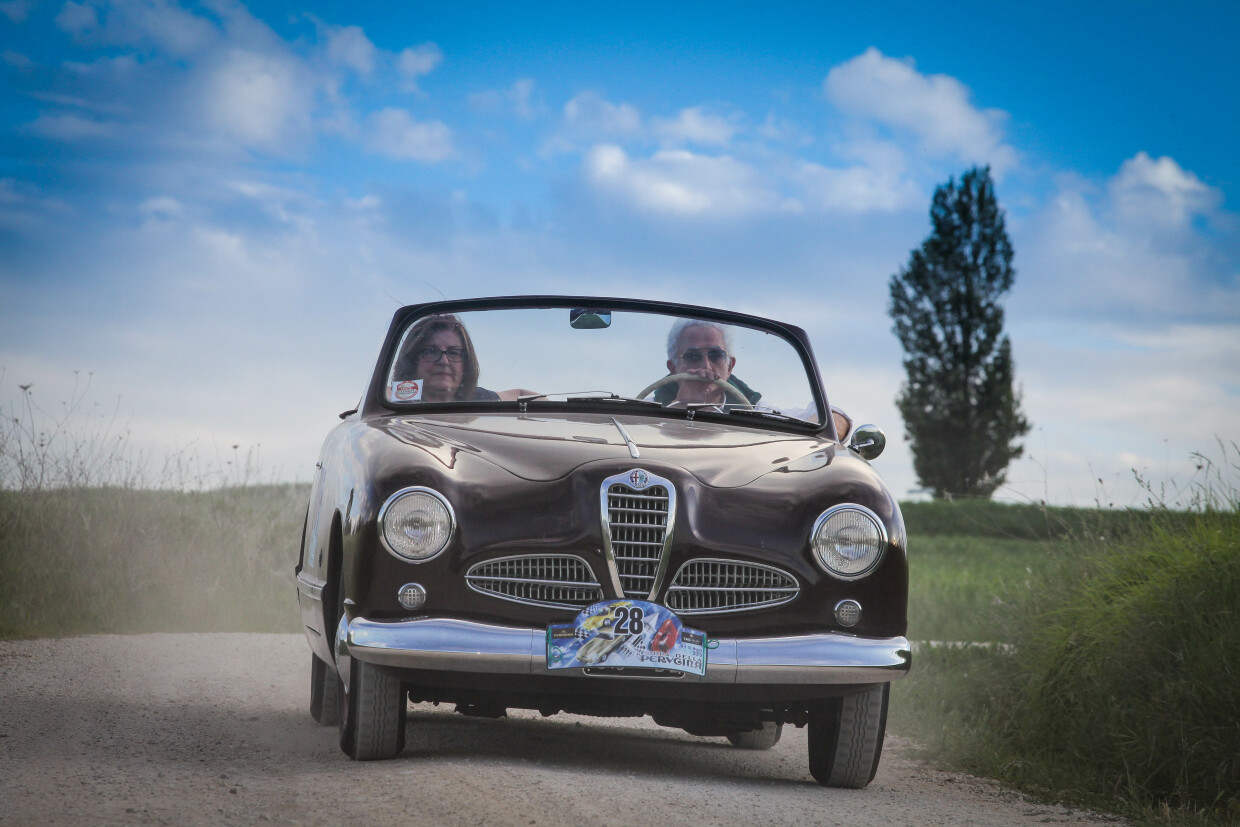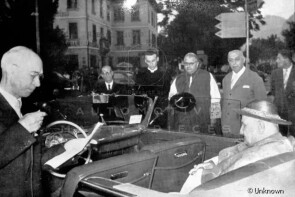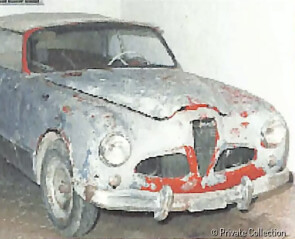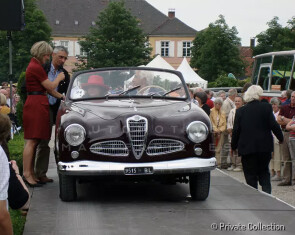
1952 Alfa Romeo 1900 L Cabriolet Victoria
ON/OFF
Why am I an Automotive Masterpiece?
In 1950, Alfa Romeo thought it was time to replace the glorious but now old pre-war 6C2500 and to make a car keeping up with new technologies that now were proposing the body integrated into the chassis: a car, so to speak, modern. The car, entirely designed under the supervision of Orazio Satta Puliga, born and developed entirely at the Portello plant, would have contained, like Alfa Romeo tradition, several mechanical refinements. The Alfa Romeo 1900 was built between 1950 and 1959 and was the first entirely new post-war project of the company. It was the first Alfa Romeo built entirely on an assembly line, starting the high-quality mass production at the Portello. First monocoque production car and the first Alfa Romeo with left-hand drive. The heart, as in every Alfa Romeo, was the engine. With the 1900 the Milanese house abandoned the six and eight cylinders engines in favor of a fractioning that allowed a lower taxation. Instead, they were in light alloy, with two overhead camshafts and hemispherical chambers. Giuseppe Busso opted for an independent double wishbones front suspension. The rear suspension was new: the live axle with coil springs was connected to the chassis by two lower struts and a top triangle. The aluminum drum brakes were finned and the rims of the wheels equipped with slits to help cooling. The 1900 was one of the very first automobiles in the world to adopt radial tires. The configuration, the design of all the monocoque laminates and even the study of production equipment were carried out at the Portello. The first road exit took place on March 2, 1950 with Consalvo Sanesi driving. The shape was the result of a refining by Orazio Satta Puliga and Antonio Alessio. He consulted Gaetano Ponzoni, of the Touring that suggested significant finishing touches. The gear lever by the steering wheel allowed two three-seater sofas. The bakelite steering wheel had a horn ring. The dashboard had a large semi-circular speed indicator with oil pressure gauge and fuel gauge on each side. In the middle, the housing for the radio or the tachometer. The 1900 four-door sedan was the only model available until the introduction of the 1900C coupe in 1951 and the TI saloon in 1952, it was equipped with a 1.9-liter engine that delivered 90 hp and reached a top speed of 171 km/h. Production ceased in 1959 with a total of 17,243 cars produced in the various models. It was the “Alfona” for the most, the “Pantera” for excellence, “the family car that wins the races” in the slogans. She was much loved and also very feared.
Iginio Alessio, then general manager of Alfa Romeo, was concerned for the viability of the independent Italian Coachbuilding industry–the avant of the unibody chassis design was threatening to put the carrozzerie out of business. The 1900 chassis was used by many coachbuilders to their designs for one-offs or small series production. The 1900 L model was a rolling chassis destined for external coachbuilders and had the same wheelbase and track dimensions as the standard 1900 berlina. The coachbuilders produced cars with overall lenghts that were in certain cases greater than that of the standard model. Carrozzeria Stabilimenti Farina was a coachbuilding company founded in 1919 by Giovanni Farina, older brother of Battista 'Pinin' Farina. Stabilimenti Farina made 48 convertibles based on the 1900 L chassis, they were called as Victoria Cabriolet Stabilimenti Farina. All of these cars were built in 1952 with maybe a few in 1953. Stabilimenti Farina closed its doors in 1953.
Chassis AR1900*20075 is one of the few Alfa Romeo 1900L Cabriolet Victoria survived. It is believed to be the car used by the Patriarch of Venice, Cardinal Roncalli, later Pope Giovanni XXIII, on the occasion of the Seminario Eucaristico di Belluno (Eucharistic Belluno seminary) in 1956. The car changed its intended use at the beginning of the 60s, used for rental service with driver. It underwent a complete restoration in 2008 and since then has actively participated in many re-enactment events for historic cars.




